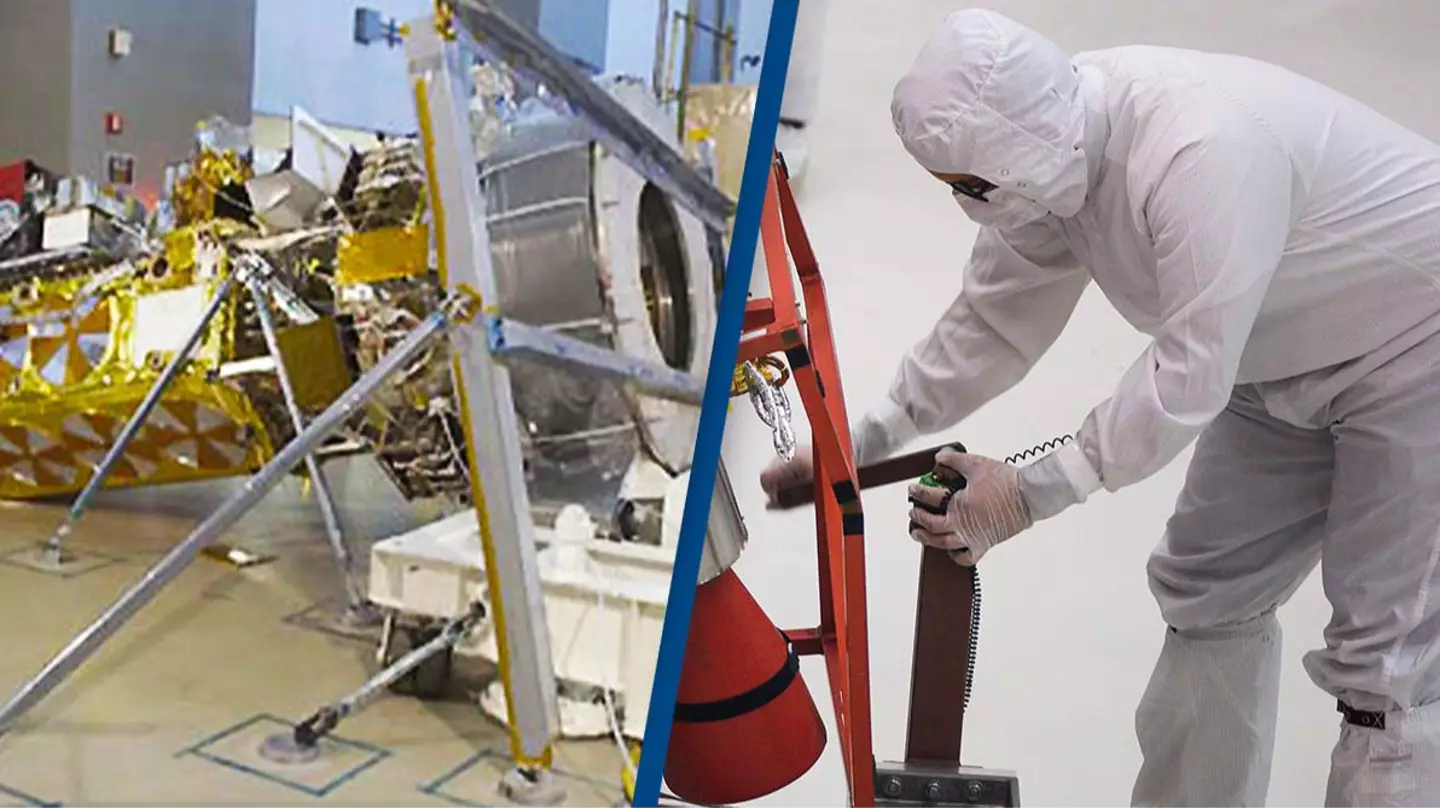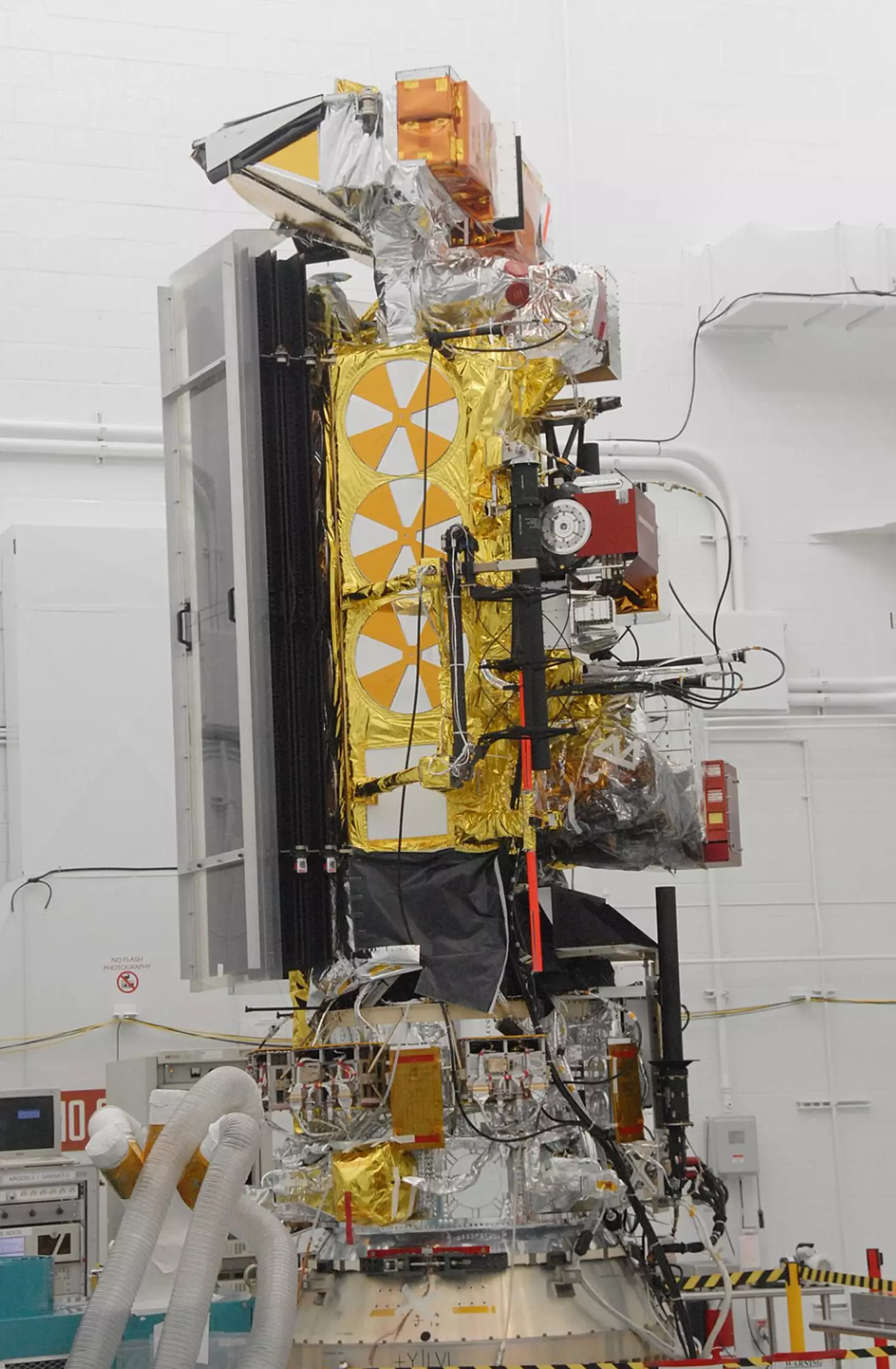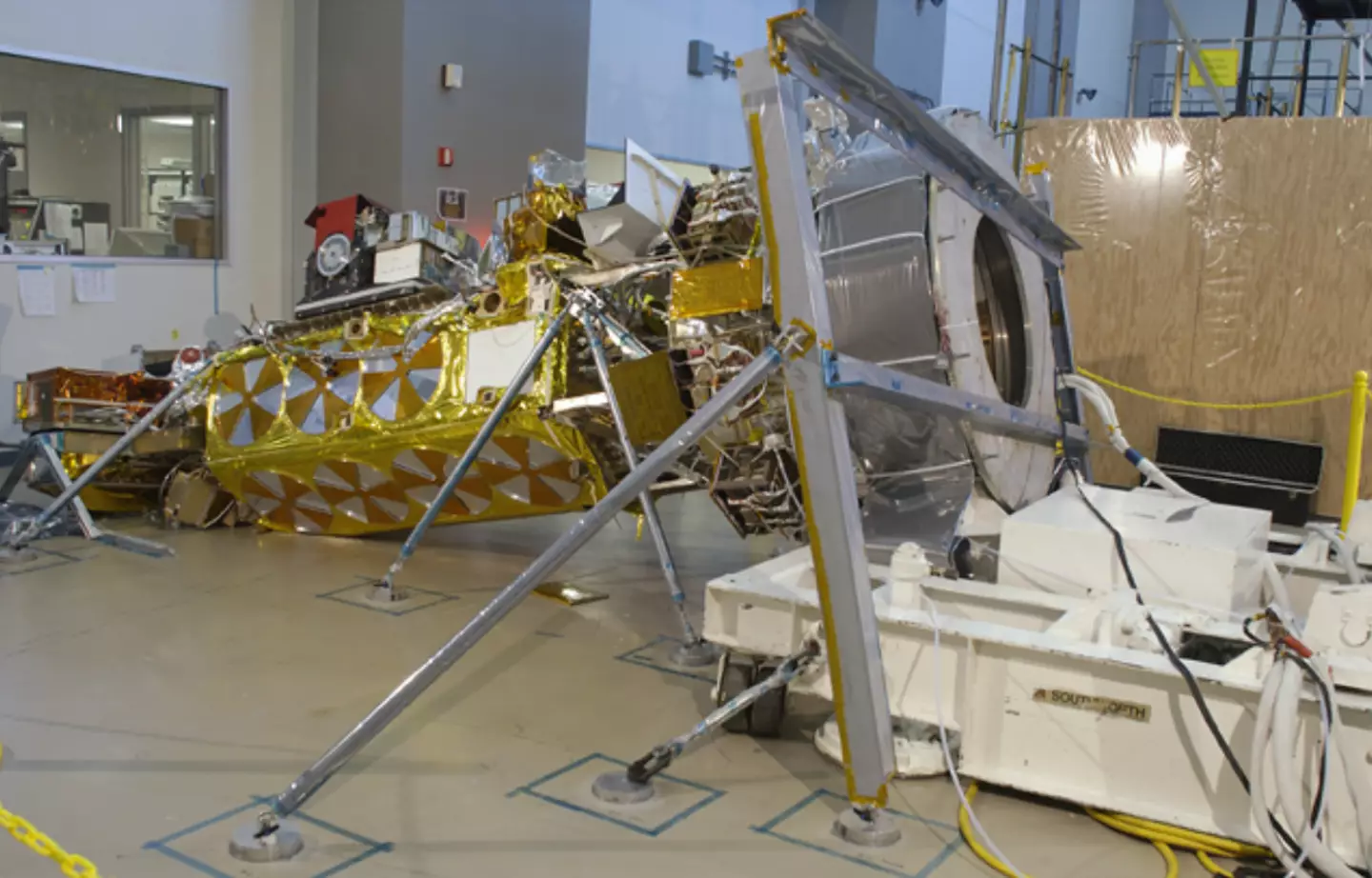
Everyone's had a bad day at the office, but this person's was definitely up there as one of the worst.
Once upon a time, NASA and the US National Oceanic and Atmospheric Administration (NOAA) hired Lockheed Martin to construct the NOAA N-Prime weather satellite - but things ended in disaster in 2003.
While the satellite, which was said to be valued at an eye-watering $233 million, was being constructed at Lockheed Martin's California-based manufacturing facility, the ginormous piece of tech toppled off a cart while being moved.
The satellite was being moved from a vertical to horizontal position when it fell a meter onto a concrete surface and, while no injuries were sustained during the fall, the same couldn't be said for the satellite itself.
Advert
It went on to be revealed that NOAA N-Prime (which was later known as NOAA-19) had suffered heavy damage as a result of the ordeal, and it cost a hell of a lot to fix.
The faux pas meant Lockheed Martin had to forfeit any profits it had already earned or was going to earn from the satellite to foot the repair bill, while the US Government had to pay the rest.
And I hope George W. Bush was sitting down when he received the news as they had to pay a staggering $135 million, NASA spokesman Dave Steitz said at the time - as per Space.com.

An investigation into the matter was carried out after the costly mistake, and revealed that it was a very minor thing that caused the catastrophic damage.
Advert
It was reported at the time that the physical damage caused was a result of the satellite missing just 24 bolts.
The bolts were needed to secure the spacecraft to a device called the Turn-Over Cart (TOC).
A report from NASA stated: "The bolts were removed from the TOC by another project while the cart was in a common staging area, an activity which was not communicated to the NOAA project team."
Oops.
Advert
It was found that the mishap would have been averted had the bolts in question been fitted as needed.

At least 15 percent of the satellite needed replacing afterwards, Steitz and Lockheed Martin Space Systems spokesman Buddy Nelson confirmed.
He said in a statement at the time: "Lockheed Martin has voluntarily contributed to the rebuild effort all profit previously earned and paid on the contract.
Advert
"The company will undertake the completion of the N-Prime satellite bus on a cost-only basis, forgoing all profits that otherwise might have accrued to Lockheed Martin for this spacecraft bus."
The launch of the satellite was pushed back to December 2007, but it wasn't launched until February 2009.
The NOAA-19 marked the last of the American National Oceanic and Atmospheric Administration's series of weather satellites.
Topics: NASA, Space, Science, Technology